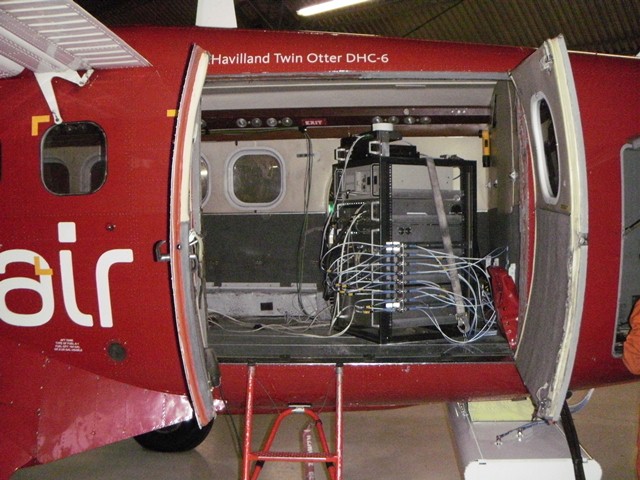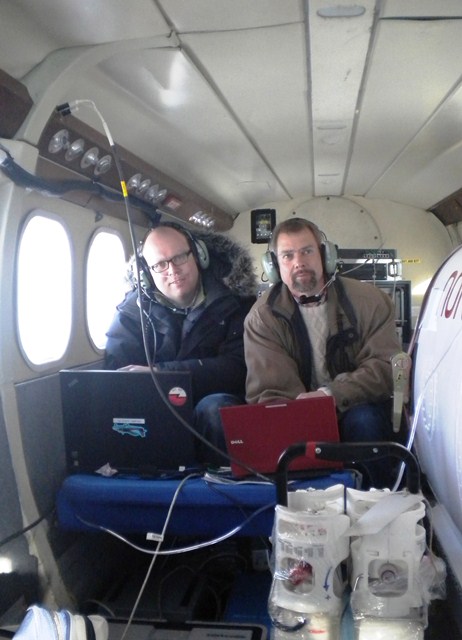From Jørgen Dall and Anders Kusk (DTU Space), Kangerlussuaq, 22 April
From Thursday to Saturday (19–21 April), a Twin Otter aircraft was flown over the K-transect, a line starting at the Russell outlet glacier near Kangerlussuaq and stretching some 150 km into the ice sheet. The Twin Otter carried a radar called POLARIS, developed for ESA by the Technical University of Denmark. Asa Tania’s earlier post mentioned, the objective was to assess one of the secondary objectives of ESA’s Biomass Earth Explorer candidate mission: ice mapping.
The direction of the antenna pattern can be steered by means of electronic beamforming, and looked to the left, to the right and straight down with POLARIS configured as a SAR and as an ice sounder.
The SAR data must be acquired from altitudes up to 20 000 ft, and since the Twin Otter is not pressurised, we emptied several of the white oxygen bottles seen in the picture.
With a few meters precision, the pilots repeated the same tracks over and over again, carefully following the variation of the ice surface elevation.
Two weeks from now, these exact tracks will be repeated to measure the motion of the ice during this period. One of the primary parameters to be measured with POLARIS is the ice velocity, and the K-transect excels by offering in situ measurements from several permanent GPS receivers.
Prior to the campaign, two 2-metre radar reflectors were lifted by helicopter onto the ice sheet and deployed by scientists from the Institute for Marine and Atmospheric research Utrecht (IMAU). Assisted by the helpful staff from the local Air Greenland ground services team, we deployed a third reflector on firm ground in Kangerlussuaq. These reflectors will help calibrate the POLARIS system and combine data from multiple tracks.











Discussion: no comments